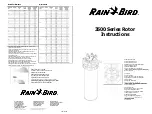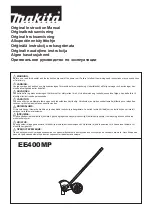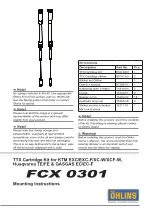
Application hints
Instruction Manual, Feb-17
18
6.4
System leaks
Telltale signs of system leaks
Before you even see your first drip from a fitting, your system can tell you that the
problem exists. The most common signs of system leaks are as follows:
1.
No flow or pressure
2.
Pump pressures up, but no flow
3.
Noisy baseline
4.
Baseline drift
While all of these symptoms could also indicate problems completely unrelated to leaking
fittings, it is always easiest to start there. Not only are fitting leaks usually easy to repair,
they are also the least expensive part of the system that can cause problems.
Check to make sure your tubing is seated properly
When using finger tight fittings, the tubing must bottom out in the receiving port before
the nut and ferrule are tightened. If a gentle tug disengages your tubing after the fittings
have been tightened, loosen the fitting, push the tubing to the bottom of the receiving
port, and re-tighten the fitting.
The fitting may not be tightened enough
Stainless steel nuts and ferrules require a wrench to tighten them, even after repeated
use. Finger tight fittings also require a good turn; however, don’t use a wrench unless
instructed to do so, or you may damage the fitting.
Notice: Over tightening can cause leakage too!
You may be using incompatible fittings
Make sure you are using a nut and ferrule that are compatible with each other and with
the components of your system
Check the condition of the nut and ferrule
After repeated use, nuts (and especially ferrules) will gradually become de-formed to the
point of being incapable of creating the seal they were de-signed to make. Always keep
an extra supply of all the nuts and ferrules you are using so that you can replace them
quickly and avoid unnecessary down time.
Check the receiving port for damage
Sometimes a leaking connection has nothing at all to do with the nut and ferrule, but
with the receiving port. Ports that have had stainless steel fittings swaged into them are
especially susceptible to damage. Check the receiving port for visible burrs or scratches
and replace if necessary.
Evaluate chemical compatibility
Using fittings made of material that is incompatible with your mobile phase is a sure way
of creating leaks.
Summary of Contents for TLC-MS INTERFACE 2
Page 1: ...INSTRUCTION MANUAL TLC MS INTERFACE 2...
Page 27: ......











































